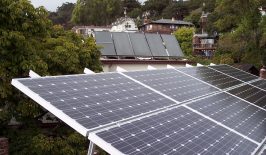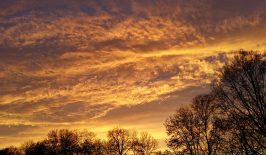A university project called “Solar Spline” aims to kill (or at least help) three birds with one stone: provide shade, produce energy, and make urban spaces more liveable.
Advancing climate change brings with it new challenges in all areas. In high-density cities especially, it will continue to get hotter and hotter due to the so-called “urban heat island effect”. This impacts inner-city areas where temperatures are significantly higher than in less built-up areas, due to the large proportion of dark, sealed surfaces, such as roads and buildings, which reduces evaporation and at the same time stores heat. This not only has a negative impact on the well-being and health of those living and working in the city, but may further exacerbate climate change. Relatively simple measures such as creating more green rooftops or facades, along with lightening roof surfaces, can have a mitigating effect.
Public squares and open spaces can be protected from strong solar radiation with shade cloths or awnings. The “Solar Spline” project developed at the University of Kassel and the Kunsthochschule Kassel aims to turn these kind of sunshades into active energy producers too – in a more sophisticated way than just taking a sunshade and “sticking solar cells on top of it.”
In order to achieve this, organic photovoltaic (OPV) modules have been integrated into an ultra-light construction that appears to float freely in the air. This “solar cloud” is supported by a rope structure and fastened via anchor points. The total installation area of the prototype, which weighs less than 120 kg, is about 100 m² and covers a spatial area of 30 m². Through the use of OPV modules, which are very light, flexible and transparent, a construction is possible that is oriented towards nature – the solar spline prototype moves like a blade of grass or a tree in the wind. According to the creators, a test installation has also weathered two summer storms including winds in excess of 100km/h.
Organic photovoltaics for urban areas
An interdisciplinary project team consisting of Prof. Frank Stepper, Timo Carl and Dr Markus Schein as well as students of architecture, product design, computer science and environmental technology, created the Solar Spline. Timo Carl told RESET that the team was concerned with proposing a concrete solution for problems such as the urban heat islands, along with the active competition for land between needs for habitat, food production, and energy production. In addition, the project was also conceived on the basis of the conviction that “a liveable development of our built environment can only be achieved through a real synthesis of ecology and design”. The energy-producing sun sail also has an impressive space-creating effect – “perhaps its most important function,” says Timo Carl.
The Solar Spline won the Blue Compass Audience Award 2018, an award from the German Federal Environment Agency for projects aimed at adaptable ideas for the consequences of climate change.
The construction could be used in many different ways in urban areas. This includes as a small-format roof for bus stops, for example, and for large urban squares. At present, however, this would still be quite expensive: the cost of the prototype was 12,000 euro, or 400 euro per square metre for the roofed area. However, the project team is confident that the costs for further realizations can be amortized more and more by the energy yield of organic photovoltaics. It’s also expected that the production costs for OPV cells will become cheaper in the future.
The project team is currently looking for partners to establish a larger, and enhanced version of the Solar Spline. According to Timo Carl, further research topics and design ideas have emerged from the project, “such as the development of tailor-made carrirer systems for organic photovoltaics and new methods of aligning cells in geometrically complex arrangements for optimum efficiency.” We’re looking forward to seeing what ideas and constructions will appear in the future to improve both the appearance and the liveability of our cities – and at the same time produce clean, green energy too.
This is a translation by Tristan Rayner of an original article that first appeared on RESET’s German-language site.






